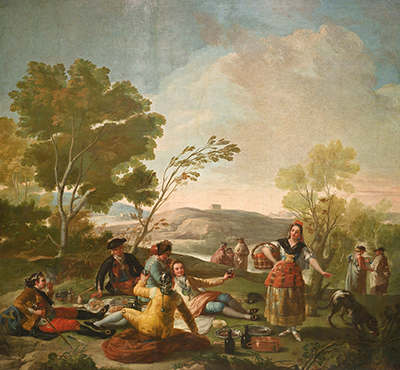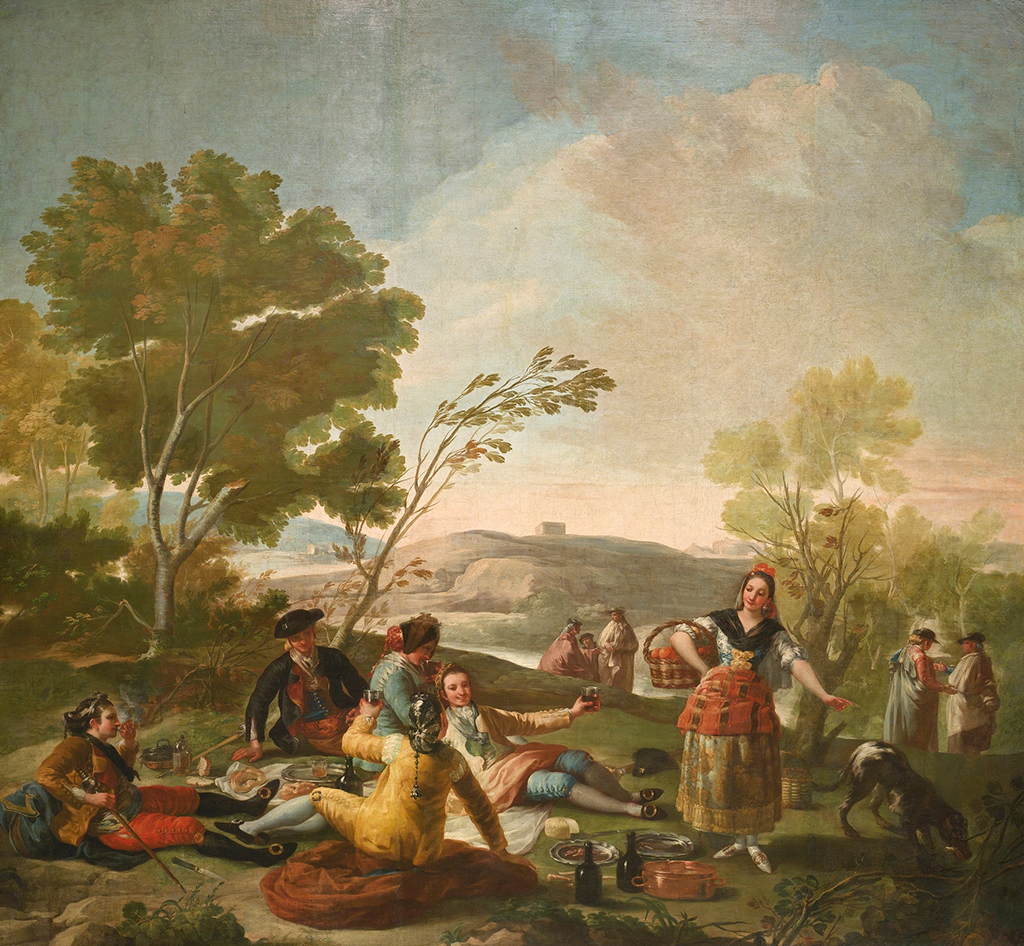The Picnic on the Banks of the Manzanares by Francisco de Goya (1746-1828) is a fine example of Rococo painting. Identified by delicate brushwork in bright colour, the fashion for Rococo emerged in the eighteenth century, when Goya was working as court painter to the Spanish royal family.
Initially working for Charles III, Goya created a series of ten cartoons for the monarch's son, the future Charles IV and his bride, Maria Luisa de Parma, on the theme of countryside. The popularity of Rococo was in accordance with a style of architecture identified by delicate though ornate mouldings, often gilded, upon building facades and interiors. The subject of Goya's painting is the fete galante, that is, a representation of richly-dressed men and women enjoying a festive occasion in an idealized and usually, rural setting.
Although Goya is associated with the monochrome engravings and darker themes of his two cartoon series, the Caprichos and the Disparates, his work as court painter obliged him to supply fashionable images to his employers. The most famous expounder of the fete galante was Antoine Watteau (1684-1721). Goya's painting refers in many ways to Watteau's most famous painting, Return From Cytherea (1717-1719). In Watteau's work, a gathering of young people stand and sit alongside a lake. All are dressed in fine silks and elegant satins. In addition to the allegorical cupid that flies overhead, their paired groupings and tender attitudes reveal that they are lovers.
By contrast, the Picnic on the Banks of the Manzanares is more realistic in subject matter. The people gathered by the lake are enjoying a picnic but no supernatural elements are present. The figure of the orange-seller at its focus adds a dash of coarseness to the overall atmosphere of elegant ease and luxury. The empty bottles placed in the foreground suggest that the party, although serene, could presently turn into a more unruly affair. The dog scavenging for leftover food is an item of social comment on the part of Goya, who actually despised the privileged lifestyles of his royal patrons.
But Goya's skill ensures that the work is not too overtly political, bearing recognisable hallmarks of the fete galante. Every person is rendered in full figure and is beautifully dressed. Non-realistically, the skirt of the orange-seller appears to be embroidered with gold thread. Other details include the flesh tints, strands of hair and the individual features of the subjects. Goya's skill with colour is apparent, from his creating perspective by placing the blue hill in the background to his organising of the bright reds and blues, yellows and gold, in the foreground. Painted in oil upon canvas, Picnic on the Banks of the Manzanares measures 271cm x 295cm and can be seen in the Prado Museum, Madrid.





